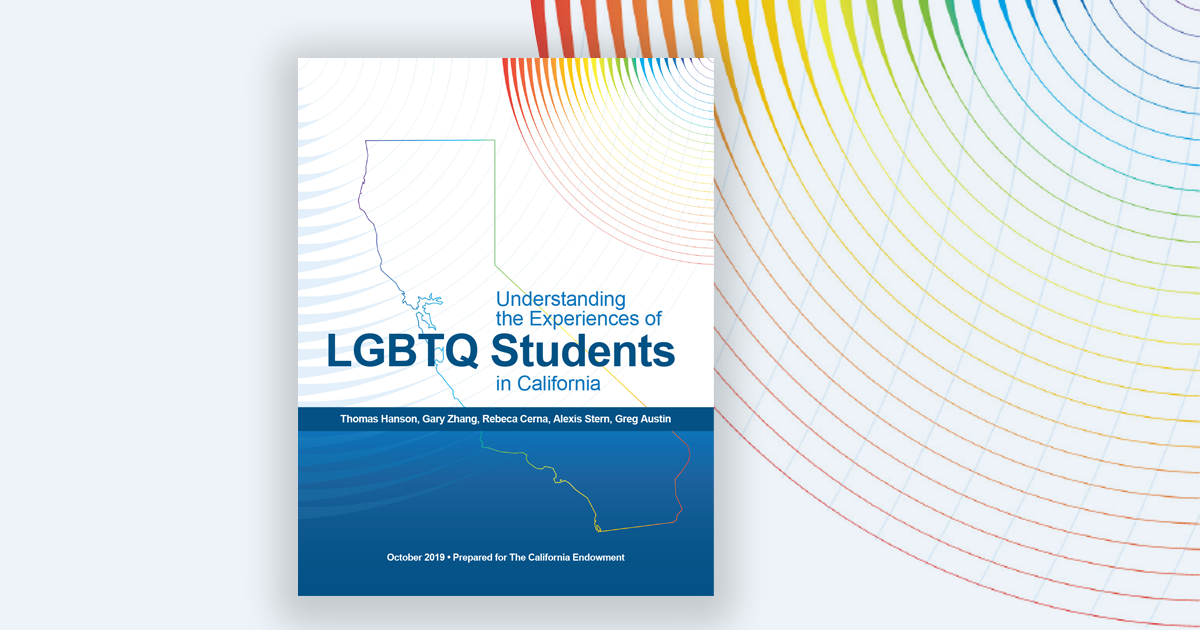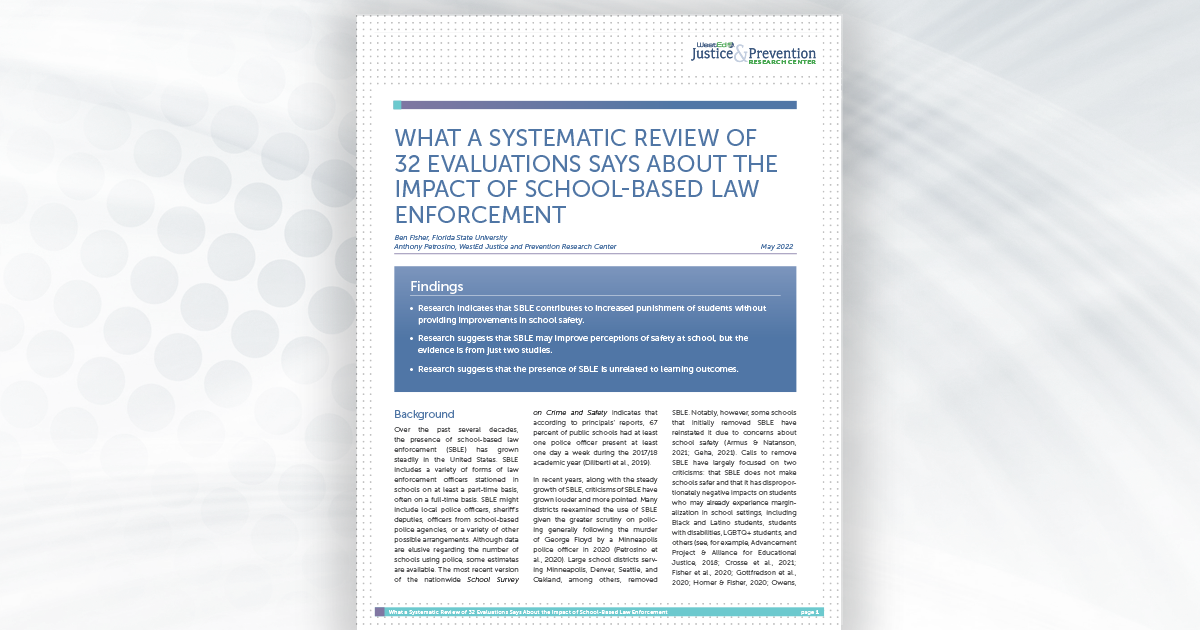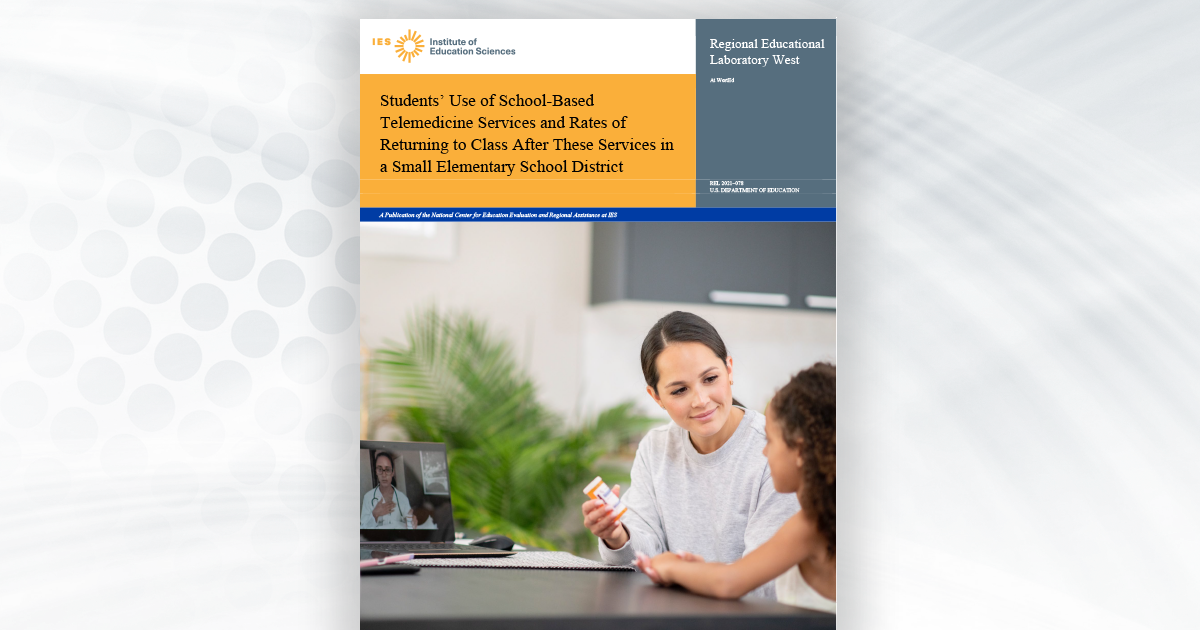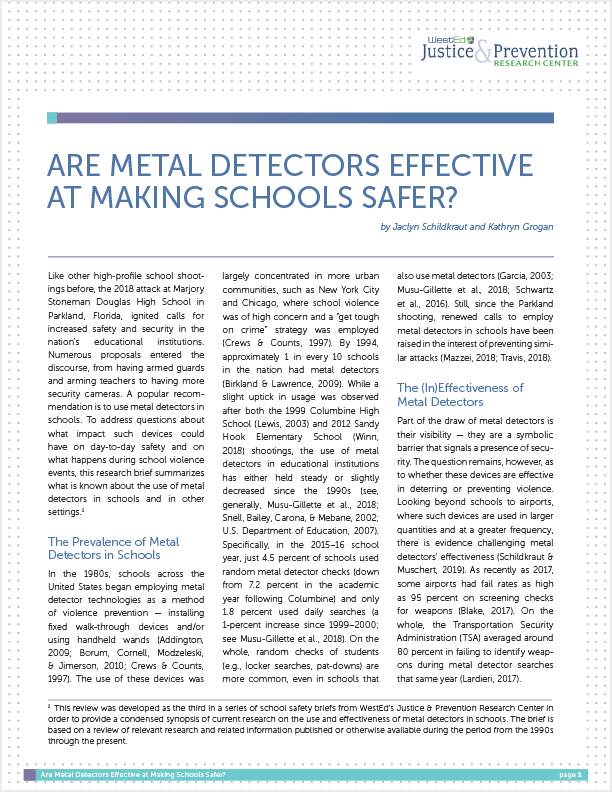Spotlight on Research to Support the Whole Child, Whole Person, and Whole Community
Posted on

This Spotlight highlights recent WestEd research that explores how different aspects of students’ experiences impact outcomes. These aspects include students’ physical and mental well-being as well as sense of belonging, connection, and safety.
In the following resources, WestEd researchers examine the experiences of LGBTQ students; the effects of school policing on safety, perceptions, and academic outcomes; and the impact of school-based telemedicine on overall time spent in class.
Educators can use these findings to develop whole-person systems of support and create research-based policies and practices to ensure all students have the opportunity to live to their full potential.
Understanding the Experiences of LGBTQ Students in California
 Research shows that lesbian, gay, bisexual, transgender, and questioning or queer (LGBTQ) youths are at high risk for bullying, violence, poor mental health, and other challenges.
Research shows that lesbian, gay, bisexual, transgender, and questioning or queer (LGBTQ) youths are at high risk for bullying, violence, poor mental health, and other challenges.
The availability of data from WestEd’s California Healthy Kids Survey (CHKS), which provides arguably more data on LGBTQ youths than any other source in the nation, offers educators, school administrators, and state officials an important opportunity to explore how LGBTQ students—and other populations—perceive their schools’ climates and how those perceptions relate to their academic success and emotional well-being.
This report describes the school experiences of LGBTQ students by examining 2 years of CHKS data from approximately 800,000 secondary school students. The data reveal students’ perceptions of school supports, school safety, school engagement, academic performance, and mental health.
Previous research has pointed to challenges faced by LGBTQ students but has generally conflated multiple gender identity and sexual orientation categories, making it difficult to conclude how different kinds of students experience the challenges differently. This report instead disaggregates data by three gender identity categories and by five sexual orientation categories, thereby providing a completer and more nuanced picture.
The findings in this report indicate that LGBTQ youths receive substantially fewer social supports from teachers and school peers than do their non-LGBTQ peers. The authors document the unmet needs and challenges of LGBTQ youths in California and provide suggestive evidence that schools might significantly improve the well-being of LGBTQ students by implementing policies and services and creating a culture of support to address LGBTQ students’ unique needs and elevated risks.
What a Systematic Review of 32 Evaluations Says About the Impact of School-Based Law Enforcement
 One common policy in response to concerns about school safety is to employ police in school buildings regularly. Although many schools have had some regular presence of police in their buildings, the murder of George Floyd in May 2020 led to more scrutiny of law enforcement across the board. As a result, several districts across the nation began to reconsider the use of police in schools.
One common policy in response to concerns about school safety is to employ police in school buildings regularly. Although many schools have had some regular presence of police in their buildings, the murder of George Floyd in May 2020 led to more scrutiny of law enforcement across the board. As a result, several districts across the nation began to reconsider the use of police in schools.
However, as schools began returning to full-time, in-person teaching, concerns about the safety of students and staff led several districts to reverse their decision and bring officers back to campus. More research is needed to guide this critical policy decision.
To respond to this research need, the WestEd Justice and Prevention Research Center, in collaboration with Professor Ben Fisher of Florida State University, conducted a systematic review of research on the effects of school policing on safety, perceptions, and academic outcomes. This brief summarizes the results from this synthesis of 32 evaluations.
Students’ Use of School-Based Telemedicine Service and Rates of Returning to Class After These Services in a Small Elementary School District
 Schools are often places where students receive supports for wide-ranging basic needs and health, mental health, and other support services. For increasing numbers of schools, offering telemedicine services is part of a broader “whole child” approach for addressing unmet health and well-being challenges that can interfere with student academic success.
Schools are often places where students receive supports for wide-ranging basic needs and health, mental health, and other support services. For increasing numbers of schools, offering telemedicine services is part of a broader “whole child” approach for addressing unmet health and well-being challenges that can interfere with student academic success.
This study report, developed by REL West at WestEd, describes the first 2 years of implementation of school-based telemedicine services before the pandemic at one small elementary school district. Results show that students in the lower and upper elementary grades did not differ in their use of telemedicine. However, there were differences by student race/ethnicity, including the reasons for using telemedicine.
The study found that nearly all school-based telemedicine visits resulted in students returning to classes for the remainder of the day. These students received, on average, 3 hours of instruction remaining in that school day.
Subscribe to the E-Bulletin
 Stay informed about WestEd’s research, resources, services, events, and career opportunities by subscribing to our E-Bulletin. Our latest issue explores research and evaluation to support the whole person. Topics include the following:
Stay informed about WestEd’s research, resources, services, events, and career opportunities by subscribing to our E-Bulletin. Our latest issue explores research and evaluation to support the whole person. Topics include the following:
- WestEd at the 2023 AERA & NCME Annual Meetings
- Understanding the Experiences of LGBTQ Students
- What’s the Impact of School-Based Law Enforcement?
- Building Culturally Responsive and Equitable Systems
- Anti-Racist Evaluation Strategies: A Guide for Evaluation Teams
- WestEd at the 2023 Carnegie Foundation Summit
- Telemedicine May Help to Improve School Attendance
- Do Lower Suspension Rates Improve School Climate?
Follow Us on Social Media
How is your state, district, or school drawing from research to support the whole person? Join the conversation with us on Twitter, Facebook, and LinkedIn.


